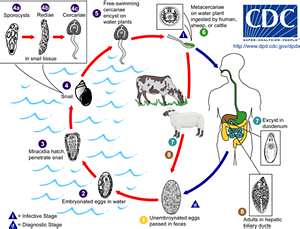Dr. Utpal Barman1, Dr. Arup Das2, Daina Talukdar3
1,2Assistant Professor, 3 Third year, B.V.Sc. & A.H. Student
College of Veterinary Science, Assam Agricultural University, Khanapara-781022
Introduction:
Since time immemorial, human civilization has been closely associated with animals, plants, and the environment. We are dependent on different components of nature for our livelihood. It is essential to maintain an equilibrium amongst the different components to have a better life for mankind on this planet. Animals are an integral part of our life in many ways. We, besides being dependent for food, also rely upon animals for our sound health. Animal diseases have considerable importance in human welfare both as a cause of illness in man as well as reducing the food potential of the world. Here, comes a previously less discussed topic called zoonosis or zoonotic disease.
What is a Zoonosis?
As defined by the WHO expert committee on zoonosis, it is “any disease or infection that spreads between vertebrate animals and human being”. The term “zoonosis” was first coined by Rudolph Virchow. In simple words, its transmission is a two-way process which means infections may spread from animal to human or vice-versa. We are usually more concerned about the diseases that spread from animals to human. However, there are several diseases that spread from animal to human and the list is endless. Rabies, bird flu, Salmonellosis, Tuberculosis, Anthrax, Tapeworm, Ebola, Nipah, Hendra etc. are some such examples.
Zoonotic diseases are caused by infectious microorganisms like virus, bacteria, parasites and protozoa. These organisms are generally spread frequently in close association. Following are some means of their transmission.
- Close contact with animals ensures rapid spread of the infections from animals to susceptible human.
- Some of the causative agents of such diseases are excreted in all secretions like urine, faeces, saliva, breathe, etc. which contaminate the surrounding microclimate. We are exposed to such infection through contaminated air, water, food, utensils, packaging materials, etc. Excretion of Rabies virus in saliva, Leptospira in urine, gut bacteria and protozoal pathogen in faeces, Salmonella and coli in water are some examples.
- Some of the microorganisms are spread while handling and consumption of meat, milk and other raw animal products. Bacterial pathogen Salmonella, Shigella, coli, Listeria etc. are included in this list.
- They may also be spread by fomites, vectors like mosquito, fly, tick, flea, lice etc. Bites, scratches, and licking by animals are also potential sources of spreading zoonotic diseases. Vector-borne diseases like Japanese encephalitis, Dengue etc. are causing serious impact on human health every year.
- Traditional feeding and other practices that are prevalent in tribal areas of particular location may be another cause of spillover of zoonotic infections. For example, eating raw or undercooked/smoked pork predisposes to Taeniasis.
A wide group of people like animal handlers, owners, farm workers, veterinarians, animal attendants and supporting staff at veterinary hospitals, animal activists, farmers, animal rescuers and butchers are regularly associated closely with the animals because of their professional affairs. Besides, we are indirectly in contact with the animals through handling and consumption of products like milk, meat and eggs.
Impact on human health:
Several literature and data suggest a strong link between human and animal health. Amongst all infectious diseases of human being, nearly 60 percent are transmitted from animals. According to Center for Disease Control (CDC), USA, 3 out 5 emerging diseases of human are caused by infections transmitted from animals. These diseases are causing severe threat to the humanity in terms of mortality and morbidity from time to time. A few of their impacts are highlighted below.
- We are more or less aware about rabies, an old fatal zoonotic disease of all domestic animals and human. It is transmitted by bites of animals specially carnivores which act as a carrier of the virus. As per available literature, rabies kills around 18000-20000 lives every year which is 36 percent of world’s total mortality.
- Bioterrorism is not a new concept for us. Many a times, newspaper headlines are captured by news of conspiracy to kill various important persons of various countries around the world. The causative organism of Anthrax, Bacillus anthracis is mostly used in bioterrorism, which is very deadly and the origin of infection is herbivore animals.
- In parts of India, every year with the onset of monsoon, it is a routine to have news on mortality due to vector-borne diseases like Malaria, Japanese Encephalitis etc. These diseases are transmitted by infected mosquito bites. Especially for Japanese Encephalitis virus, pigs act as a reservoir host, thus harboring the infection without any overt clinical signs. Pig farmers, who are in close proximity in an unhygienic situation that favours multiplication of mosquitoes, are highly susceptible and pick up the infection from mosquito bites.
- The recent havoc of COVID19 pandemic is known to all of us and this taught a lesson to the mankind. The whole world underwent a total lockdown to curb the infection. Even though the source of the virus is unknown, some reports speculated its link with a sea food market in Wuhan.
- Many a times we are shaken by many pandemics like Ebola, Nipah, Hendra etc. Similarly, avian influenza or bird flu is also very well known to us. It is a deadly pathogenic infection transmitted to human from poultry.
- Very recently, there was a report of outbreak of monkey pox in India.
The above-mentioned are only few examples of the vast ocean of zoonotic diseases. Emerging and remerging zoonotic diseases are taking the lead causing a huge suffering to us. These infections are challenging the human race from time to time in terms of morbidity, mortality as well as socio-cultural and economic aspect.
Prevention strategies for zoonoses:
“Prevention is better than cure” principle is best applied in the animal practice because of several reasons. Costs incurred in the treatment, production loss during suffering and fast spread because of close contact etc. make treatment an unfavorable option specially in large flock of animals. Following measures may be adopted to control the spread of zoonoses.
- Vaccination is by far the most effective preventive measure for several deadly zoonoses like Rabies. For example, Rabies is well prevented through adoption of vaccination practice in animals. Regular vaccination of pets as well as street dogs is an effective measure to control Rabies.
- Strict compliance of biosecurity measures in an affected area. This practice checks the unwanted movement of people andvehicles into the affected areas so that the infection can be contained in a limited area.
- Drinking water is a potential source of acquiring various diseases especially those that are responsible for gut pathology in human being. Clean, disinfected drinking water can resolve this issue.
- People who are professionally compelled to be in touch with sick animals should take an utmost precaution in handling the animals. Avoidance of touching with bare hands, use of mask, and use of protective cloth is highly essential for such persons.
- For control of insect-borne diseases, clean and surrounding atmosphere is highly essential. Use of mosquito nets, defogging practice, repellents etc. will reduce the insect burden and diseases thereof.
- Proper disposal of animal droppings and urine will reduce the burden of various diseases like Leptospirosis, Protozoal infections etc.
- Animal carcasses should be disposed off properly. In many instances, carcasses are thrown into some open areas which can act as a bomb to spread and contaminate the environment, people and other animals in large numbers. It is always advisable to bury such animal carcasses.
The list of control measures to be adapted will be endless. Many a times, we have separate preventive strategies for individual diseases. Above all, most important is to create awareness among the general public about the disease and its preventive measures. It is impossible to have a fruitful preventive measure without a community participation. For better curbing of such issue, a comprehensive approach covering all stakeholders.
One health approach
Development and implementation of a collective effort among health, animal and environmental sectors is simply regarded as the one-health concept. This concept helps to understand the interactions among health, animal and environment sectors and their linkage in respect of emergence of various infectious diseases. For better implementation of the same, interdisciplinary collaborative work plan between wildlife conservationist, veterinarian, ecologist, behavioral scientist, physicians, infectious disease specialist, epidemiologist etc. among other is a must. It will help to ensure better understanding of zoonoses as well as emerging infections of animals and human besides the nature.
Conclusion:
Zoonosis is an important yet neglected issue for us. Mass awareness of public will help in better understanding of such problems and will be helpful in successful implementation of the preventive strategies. WHO’s “one-health initiative” is a pathfinder step covering all stakeholders of human health, animal health and environmental health. This is a benchmarking initiative to have control over zoonoses and ensuring a sound world and healthy earth for all of us.
Reference:
- https://www.who.int/india/health-topics/rabies
- https://www.cdc.gov/
- Veterinary Medicine, A textbook of the dieses of cattle, horses, sheep, pigs and goats. Peter Constable, Kenneth W Hinchcliff, Stanley Done and Walter Gruenberg (Eds.), 11th Philadalphia.




